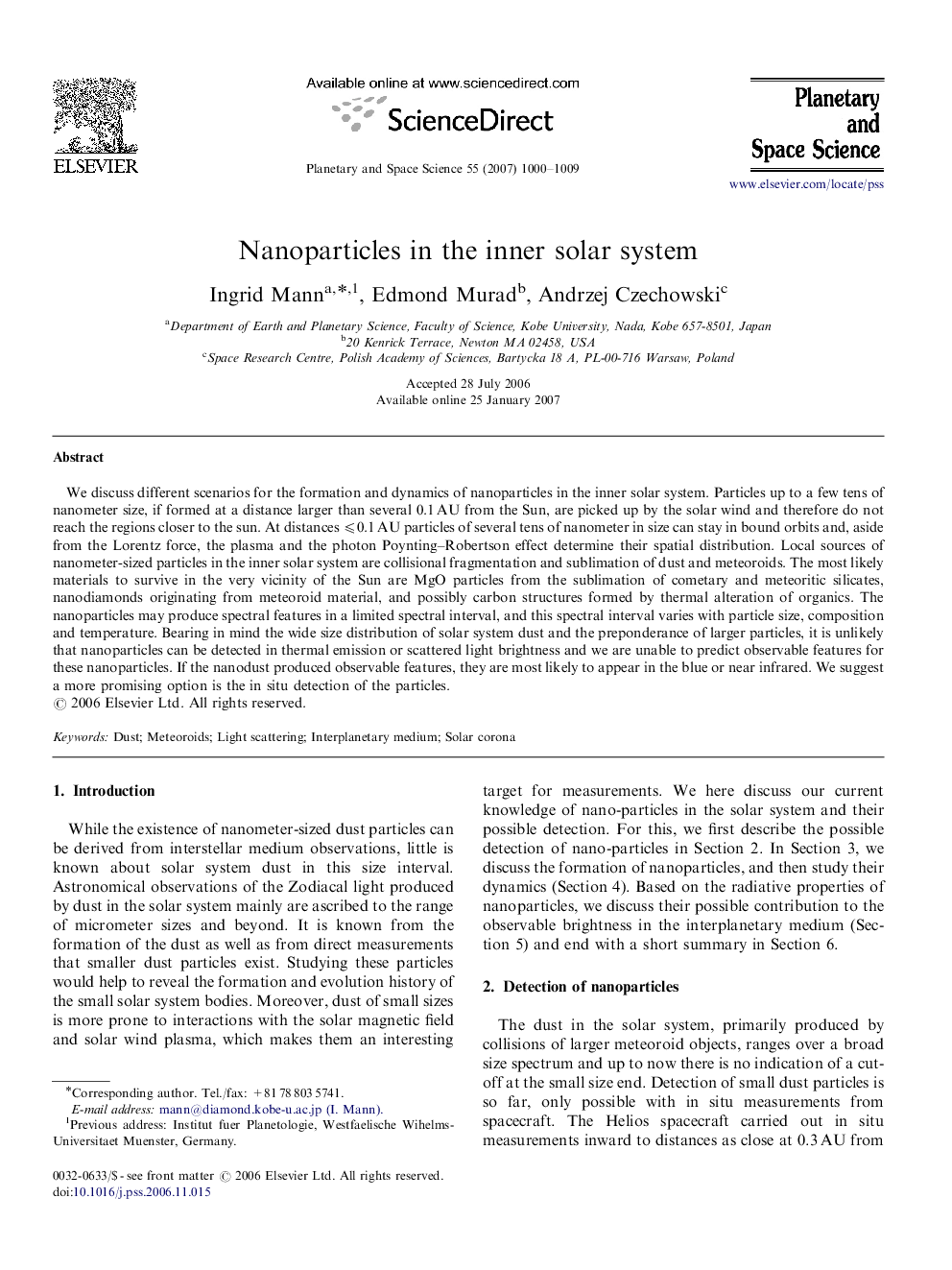| Article ID | Journal | Published Year | Pages | File Type |
|---|---|---|---|---|
| 1782581 | Planetary and Space Science | 2007 | 10 Pages |
We discuss different scenarios for the formation and dynamics of nanoparticles in the inner solar system. Particles up to a few tens of nanometer size, if formed at a distance larger than several 0.1 AU from the Sun, are picked up by the solar wind and therefore do not reach the regions closer to the sun. At distances ⩽0.1 AU particles of several tens of nanometer in size can stay in bound orbits and, aside from the Lorentz force, the plasma and the photon Poynting–Robertson effect determine their spatial distribution. Local sources of nanometer-sized particles in the inner solar system are collisional fragmentation and sublimation of dust and meteoroids. The most likely materials to survive in the very vicinity of the Sun are MgO particles from the sublimation of cometary and meteoritic silicates, nanodiamonds originating from meteoroid material, and possibly carbon structures formed by thermal alteration of organics. The nanoparticles may produce spectral features in a limited spectral interval, and this spectral interval varies with particle size, composition and temperature. Bearing in mind the wide size distribution of solar system dust and the preponderance of larger particles, it is unlikely that nanoparticles can be detected in thermal emission or scattered light brightness and we are unable to predict observable features for these nanoparticles. If the nanodust produced observable features, they are most likely to appear in the blue or near infrared. We suggest a more promising option is the in situ detection of the particles.
